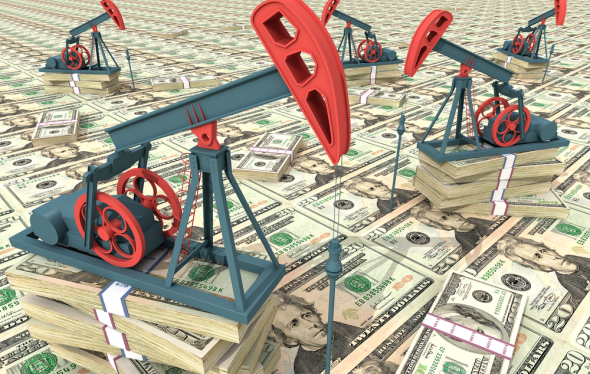Pain of lower oil prices grows

By Gulgiz Dadashova
When discussing today’s global oil market, prevailing view is that supply glut will continue in 2016 and maybe even in 2017. And harsh truth for those countries that depend on oil as a source of income is greater need of a reality check for the state budget.
Lower prices in the crude market resonated throughout the world starting from mid 2014, and Azerbaijan, whose sales of oil and gas are key sources of state revenue, is also suffering from it. Its crude Azeri Light is now trading at around $38.
The current price for Azeri Light, the main export grade of Azerbaijani oil, turns out to be even lower than the most pessimistic forecast of the government - $40 per oil.
The Parliament approved a 2016 budget based on an estimated oil price of $50 per barrel, down from $90 this year. However, the country’s government announced that it does not plan to revise the state budget forecasts for 2016, despite the fact that the price for Azerbaijani oil on global markets slightly exceeded $38 per barrel.
Given the expectations of major international organizations, including the World Bank, which predicts the price of oil at $51 per barrel for 2016 (IMF - $50.4 per barrel, the Economic Cooperation Organization - $50 per barrel, Goldman Sachs - $49.5 per barrel, Moody's - $43 per barrel), the government considers the available forecasts acceptable.
The 2016-budget sees total government revenues of 14.6 billion manats ($13.9 billion), down from 19.4 billion manats expected this year. Spending of 16.3 billion manats is forecasted, down from 21.1 billion manats in 2015. A deficit of 2.9 percent of GDP is expected, up from 2.6 percent of GDP in 2015. The oil sector may decline to 53.5 percent of GDP next year from 65.3 percent in 2015.
Meanwhile, Azerbaijan’s GDP amounted to 50.1 billion manats ($48 billion) in January-November 2015 or by 3.1 percent more than in the same period of 2014, the Azerbaijani State Statistics Committee’s report for January-November 2015 reads.
The non-oil sector of the economy increased by 4 percent compared to the same period of 2014. Its share in the country’s GDP hit 69.3 percent.
The country tries to reduce its dependence on energy as oil production begins to plateau, using fuel revenues to spur other sectors of the economy, such as industry and agriculture.
Lower oil prices also lead to the decline of dollar inflows into the Azerbaijani economy. This, forced the country to devalue the manat in February 2015 by a third of its value. Prior to that, the country’s Central Bank burnt a substantial chunk of its foreign exchange reserves trying to sustain the peg.
Since early 2015, the foreign exchange reserves owned by the CBA, decreased by $6.714 billion (48.8 percent), the Bank reported in October. In September, the Central Bank's foreign exchange reserves declined by $271.2 million (3.7 percent) to $7.044 billion compared to August 2015.
Are companies OK at current oil prices?
Today many energy companies faced financial difficulty, as investment is rapidly withdrawn and spending rouse. As oil prices need to be around $90 to attract investment capital, the major companies also were forced to cut spending and even close projects.
SOCAR, which is the flagship of the economy of Azerbaijan and oversees production, sale and processing of hydrocarbons in the country, also recognized that it's time to save money.
Azerbaijan’s energy giant has recently identified a number of measures aimed to preserve financial stability and optimize the company's expenses due to the prolonged fall in oil prices. If in early 2014, the prices were slightly close to $110 per barrel, now they do not reach up to $40.
“The main task is to review the estimate of revenues and expenditures, the number of departments and staff units of structures that are part of SOCAR without prejudice to their technological activities, allocation of financial resources to the areas that have high profitability and require less money,” the company reported.
SOCAR earlier announced that the losses can reach about 400 million manat ($510,796 million), if the prices for oil in 2015 remain at the level of $60 per barrel. But, now the figure is even lower.
As for the cost of oil production, it should be noted that the average cost of crude oil is about 90-100 manats ($76-95) per ton, and in terms of barrels it is about $15 per barrel.
The company’s export volumes also are very small companies (in fact the vast majority of oil exported from the country accounts for profit oil of Azerbaijan), and the produced oil is mainly directed at providing domestic needs.
Azerbaijan plans to produce 40.7 million tonnes of oil and 30.2 bcm of gas in 2015. The country expects to produce 40 million tonnes of oil and 30 billion cubic metres (bcm) of gas in 2016.
--
Follow Gulgiz Dadashova on Twitter: @GulgizD
Follow us on Twitter @AzerNewsAz
Here we are to serve you with news right now. It does not cost much, but worth your attention.
Choose to support open, independent, quality journalism and subscribe on a monthly basis.
By subscribing to our online newspaper, you can have full digital access to all news, analysis, and much more.
You can also follow AzerNEWS on Twitter @AzerNewsAz or Facebook @AzerNewsNewspaper
Thank you!
